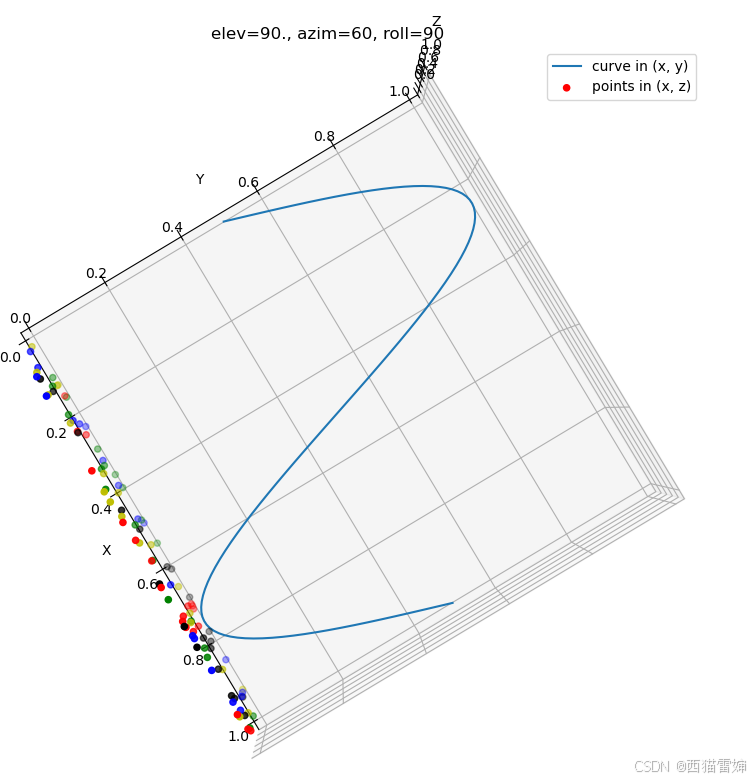
文章目录
- 一、继承
- 1.1 什么是继承
- 1.2 定义父类和子类
- 1.3 子类重写父类的方法
- 1.4 多继承
- 二、多态
- 2.1 什么是多态
- 2.2 多态的实现
- 2.3 抽象类和接口
- 三、综合详细例子
- 3.1 项目结构
- 3.2 模块代码
- init.py
- shape.py
- circle.py
- rectangle.py
- 3.3 主程序代码
- main.py
- 3.4 运行结果
- 四、总结
Python是一门强大的面向对象编程语言,它支持许多面向对象编程的特性,其中最重要的两个概念就是继承和多态。继承允许我们基于现有的类创建新类,从而实现代码重用和层次化设计;多态则允许对象以多种形式表现,使代码更加灵活和可扩展。
本文将详细介绍Python中的继承和多态,并通过一个综合详细的例子来展示它们的实际应用。
一、继承
1.1 什么是继承
继承是面向对象编程的一个核心概念,它允许一个类(子类)继承另一个类(父类)的属性和方法,从而实现代码重用和层次化设计。通过继承,子类不仅可以拥有父类的所有属性和方法,还可以添加自己的属性和方法,甚至重写父类的方法。
1.2 定义父类和子类
在Python中,定义父类和子类非常简单。子类通过括号中的父类名称来继承父类:
class Parent:
def __init__(self, name):
self.name = name
def greet(self):
return f"Hello, my name is {self.name}."
class Child(Parent):
def __init__(self, name, age):
super().__init__(name) # 调用父类的构造方法
self.age = age
def introduce(self):
return f"I am {self.age} years old."
在上面的例子中,Child类继承了Parent类,并添加了一个新的属性age和一个新的方法introduce。
1.3 子类重写父类的方法
子类可以重写父类的方法,以提供新的实现:
class Child(Parent):
def __init__(self, name, age):
super().__init__(name)
self.age = age
def greet(self):
return f"Hello, my name is {self.name} and I am {self.age} years old."
在上面的例子中,Child类重写了Parent类的greet方法。
1.4 多继承
Python还支持多继承,即一个类可以继承多个父类:
class Parent1:
def method1(self):
return "Method from Parent1"
class Parent2:
def method2(self):
return "Method from Parent2"
class Child(Parent1, Parent2):
pass
在上面的例子中,Child类同时继承了Parent1和Parent2类,拥有这两个类的所有方法。
二、多态
2.1 什么是多态
多态是指不同类的对象可以通过相同的接口调用,而具体的实现则依赖于对象所属的类。多态使得代码更加灵活和可扩展,能够处理不同类型的对象。
2.2 多态的实现
多态的实现通常依赖于继承和方法重写。在Python中,可以通过定义父类和子类,并在子类中重写父类的方法来实现多态:
class Animal:
def speak(self):
raise NotImplementedError("Subclass must implement abstract method")
class Dog(Animal):
def speak(self):
return "Woof!"
class Cat(Animal):
def speak(self):
return "Meow!"
def make_animal_speak(animal):
print(animal.speak())
在上面的例子中,Animal是一个父类,Dog和Cat是子类,它们都实现了speak方法。make_animal_speak函数可以接受任何Animal类的对象,并调用其speak方法。
2.3 抽象类和接口
在实际应用中,我们常常使用抽象类和接口来实现多态。抽象类是不能实例化的类,它通常包含抽象方法,子类必须实现这些方法。Python中的抽象类可以使用abc模块来定义:
from abc import ABC, abstractmethod
class Animal(ABC):
@abstractmethod
def speak(self):
pass
class Dog(Animal):
def speak(self):
return "Woof!"
class Cat(Animal):
def speak(self):
return "Meow!"
在上面的例子中,Animal是一个抽象类,包含一个抽象方法speak。子类Dog和Cat必须实现speak方法。
三、综合详细例子
下面是一个综合详细的例子,展示如何使用继承和多态实现一个简单的图形绘制系统。
3.1 项目结构
shapes/
__init__.py
shape.py
circle.py
rectangle.py
main.py
3.2 模块代码
init.py
__init__.py 文件用于将 shapes 目录标识为一个包。在这个例子中,__init__.py 文件可以是空的,或者可以用于导入包中的所有模块。
shapes/init.py
from .shape import Shape
from .circle import Circle
from .rectangle import Rectangle
__all__ = ["Shape", "Circle", "Rectangle"]
shape.py
# shapes/shape.py
from abc import ABC, abstractmethod
class Shape(ABC):
@abstractmethod
def draw(self):
pass
@abstractmethod
def area(self):
pass
circle.py
# shapes/circle.py
import math
from .shape.py import Shape
class Circle(Shape):
def __init__(self, radius):
self.radius = radius
def draw(self):
return f"Drawing a circle with radius {self.radius}"
def area(self):
return math.pi * self.radius ** 2
def __str__(self):
return f"Circle(radius={self.radius})"
rectangle.py
# shapes/rectangle.py
from .shape import Shape
class Rectangle(Shape):
def __init__(self, width, height):
self.width = width
self.height = height
def draw(self):
return f"Drawing a rectangle with width {self.width} and height {self.height}"
def area(self):
return self.width * self.height
def __str__(self):
return f"Rectangle(width={self.width}, height={self.height})"
3.3 主程序代码
main.py
# main.py
from shapes.circle import Circle
from shapes.rectangle import Rectangle
def main():
shapes = [
Circle(5),
Rectangle(3, 4),
Circle(10)
]
for shape in shapes:
print(shape.draw())
print(f"Area: {shape.area()}")
print()
if __name__ == "__main__":
main()
3.4 运行结果
Drawing a circle with radius 5
Area: 78.53981633974483
Drawing a rectangle with width 3 and height 4
Area: 12
Drawing a circle with radius 10
Area: 314.1592653589793
四、总结
本文详细介绍了Python面向对象编程中的继承和多态,包括继承的定义、子类的创建和重写、多继承的实现、多态的概念和实现、抽象类和接口等。通过综合详细的例子展示了如何在实际项目中应用这些概念。希望本文对你理解和掌握Python面向对象编程中的继承和多态有所帮助。



















